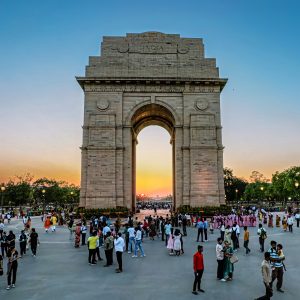AFP, Amnesty probes reveal journalists in Lebanon were targeted by Israel
Paris, France -AFP
An investigation by Agence France-Presse into the strike in southern Lebanon on October 13 that killed a Reuters journalist and injured six others, including two from AFP, points to a tank shell only used by the Israeli army in this high-tension border region.
Jointly conducted with Airwars, an NGO that investigates attacks on civilians in conflict situations, the investigation found that the attack involved a 120-mm tank shell only used by the Israeli army in the region.
It found that the strikes likely came from the southeast near the Israeli village of Jordeikh where Israeli tanks were operating.
The nature of the strikes and lack of military activity in the immediate vicinity of the journalists indicate the attack was deliberate and targeted.
The investigation was based on evidence gathered from expert analysis of a munitions fragment, satellite images, witness testimonies and video recordings filmed before and during the attack.
– The facts –
Seven journalists, from Reuters, Al Jazeera and AFP, were hit by two strikes in quick succession shortly after 18:00 as they were filming clashes between the Israeli army and armed groups in southern Lebanon.
Lebanon’s Hezbollah and local branches of Hamas and Islamic Jihad had been exchanging fire with Israel on a near-daily basis across the border since October 7.
Issam Abdallah, a 37-year-old journalist for the Reuters news agency, was killed instantly by the first strike. The other six were all injured. AFP photographer Christina Assi, 28, later had a leg amputated and is still in hospital.
– Israeli munition –
A large remnant of munition was found close to the body of Abdallah, photos of which were analyzed by six weapons experts for AFP and Airwars.
All agree that it was part of a 120-mm fin-stabilised tank shell used by the Israeli army on its Merkava tanks.
No other military group or organization in the region uses this type of munition, the analysts said.
Meanwhile, Amnesty International said the incident was “likely a direct attack on civilians that must be investigated as a war crime”.
In an official statement, Amnesty International said it had verified videos and photos and checked the scene of the incident, adding that “the group was visibly identifiable as journalists” and “the Israeli military knew or should have known that they were civilians yet attacked them anyway in two separate strikes 37 seconds apart.”
“There must be an independent and impartial investigation into this deadly attack,” the rights group said.
It was not possible to identify precisely which tank fired the shots, but the investigation found a high degree of certainty that it came from a military position near the Israeli village of Jordeikh.
Satellite imagery shows that Israeli tanks were operating from that position at the time.
An Israeli military spokesman said after the strike: “We are very sorry for the journalist’s death”, adding that Israel was “looking into” the incident, without taking responsibility.
– Targeted strikes –
The group of journalists were filming Israeli bombardments on Lebanese territory from the top of an open hill.
All were equipped with helmets and bulletproof vests marked “Press”, with their cameras placed prominently on tripods.
Multiple witnesses attest there was no military activity, nor any sign of the presence of an armed group, in their immediate vicinity during the hour before the attack.
The experts found it improbable that the Israeli army could have mistaken them for fighters, given the sophistication of its surveillance. Footage from the scene makes clear that a helicopter and drone flew low over the area prior to the attack.
The fact that the journalists were targeted by two separate strikes 37 seconds apart, falling a few metres from each other, excludes the hypothesis of accidental shooting, the experts said.
The Israeli army has yet to comment on Amnesty’s statement.










